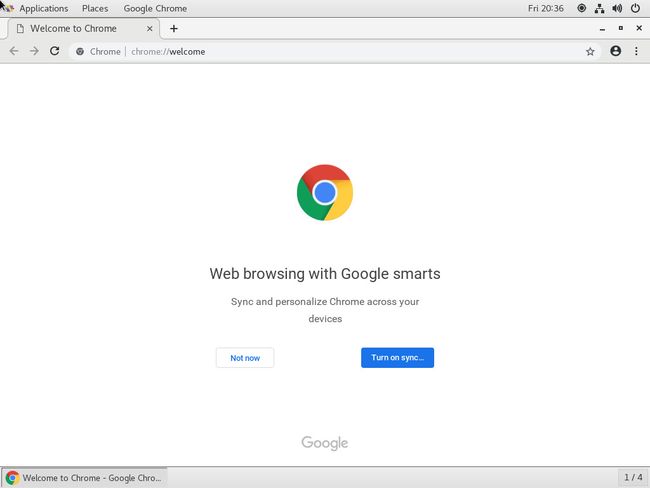https://linuxize.com/post/how-to-install-google-chrome-web-browser-on-centos-7/
Google Chrome is the most widely used web browser in the world. It is fast, easy to use and secure browser built for the modern web.
Chrome is not an open-source browser, and it is not included in the CentOS repositories. It is based on Chromium , an open-source browser which is available in the EPEL repositories .
This tutorial explains how to install the Google Chrome web browser on CentOS 7. The same instructions apply for any RHEL based distribution, including Fedora and Scientific Linux.
Prerequisites
Before continuing with this tutorial, make sure you are logged in as a user with sudo privileges .
Installing Google Chrome on CentOS
Follow the steps listed below to install Google Chrome on your CentOS system:
-
Start by opening your terminal and downloading the latest Google Chrome
.rpmpackage with the following wget command :wget https://dl.google.com/linux/direct/google-chrome-stable_current_x86_64.rpm -
Once the file is downloaded, install Google Chrome on your CentOS 7 system by typing:
sudo yum localinstall google-chrome-stable_current_x86_64.rpmThe command above will prompt you to enter your user password and then it will install Chrome and all other required packages.
Starting Google Chrome
Now that you have Google Chrome installed on your CentOS system, you can start it either from the command line by typing google-chrome & or by clicking on the Google Chrome icon (Applications → Internet → Google Chrome):
When you start Google Chrome for the first time, a window like the following will appear asking if you want to make Google Chrome your default browser and to send usage statistic and crash reports to Google:
 Select according to your preference, and click
Select according to your preference, and click OK to proceed.
Google Chrome will open, and you’ll see the default Chrome welcome page.
At this point, you have Chrome installed on your CentOS machine. You can sign-in to Chrome with your Google Account to sync your bookmarks, history, passwords, and other settings on all your devices.
Updating Google Chrome
During the installation process, the official Google repository will be added to your system. You can use the cat command to verify the file contents:
cat /etc/yum.repos.d/google-chrome.repo[google-chrome]
name=google-chrome
baseurl=http://dl.google.com/linux/chrome/rpm/stable/x86_64
enabled=1
gpgcheck=1
gpgkey=https://dl.google.com/linux/linux_signing_key.pub
This ensures that your Google Chrome installation will be updated automatically when a new version is released through your desktop standard Software Update tool.
Conclusion
In this tutorial, we’ve shown you how to install Google Chrome on your CentOS 7 desktop machine. If you’ve previously used a different browser, like Firefox or Opera, you can import your bookmarks and settings into Chrome.


